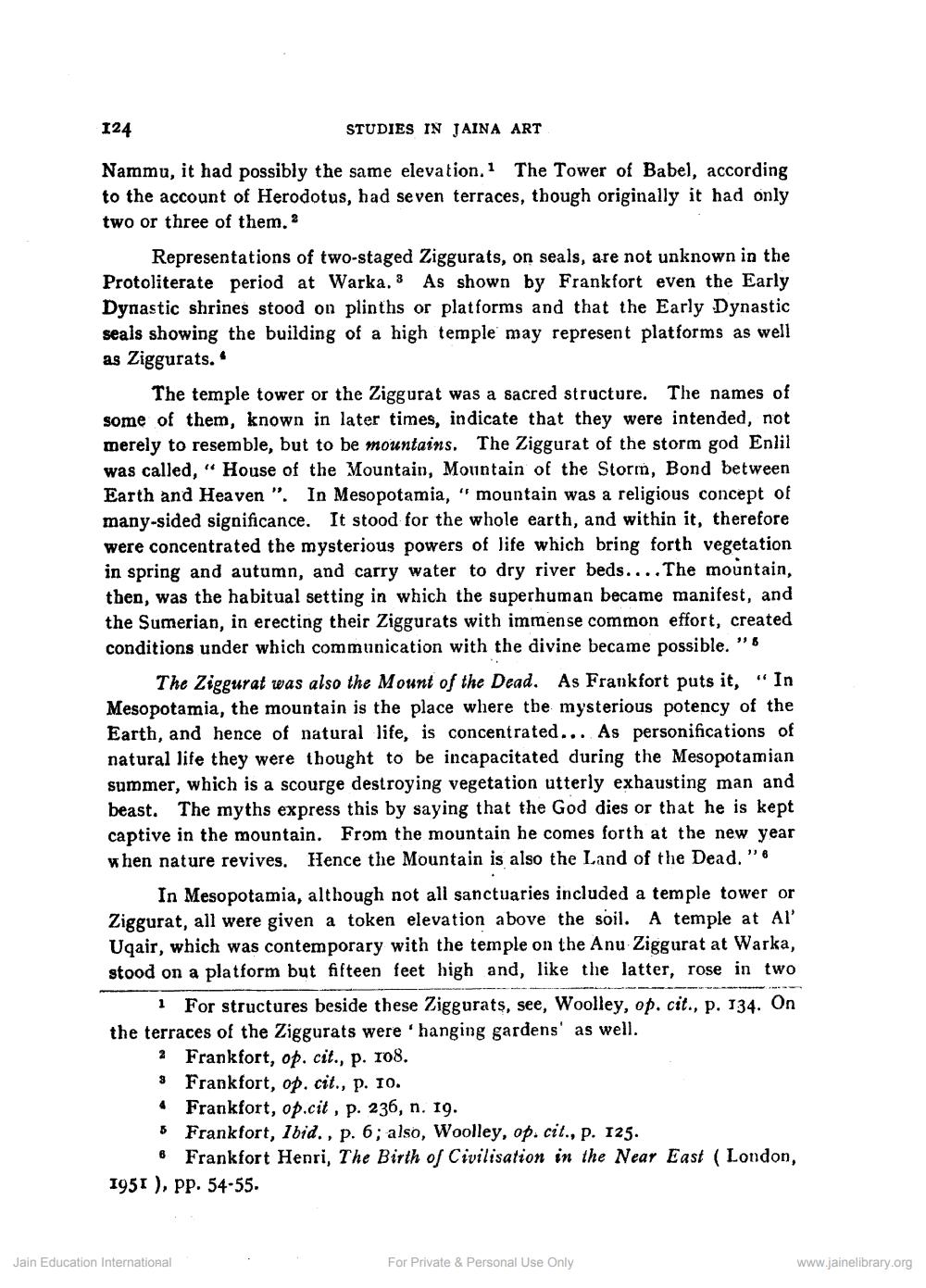________________
124
STUDIES IN JAINA ART
Nammu, it had possibly the same elevation. The Tower of Babel, according to the account of Herodotus, had seven terraces, though originally it had only two or three of them.2
Representations of two-staged Ziggurats, on seals, are not unknown in the Protoliterate period at Warka. As shown by Frankfort even the Early Dynastic shrines stood on plinths or platforms and that the Early Dynastic seals showing the building of a high temple may represent platforms as well as Ziggurats.
The temple tower or the Ziggurat was a sacred structure. The names of some of them, known in later times, indicate that they were intended, not merely to resemble, but to be mountains. The Ziggurat of the storm god Enlil was called," House of the Mountain, Mountain of the Storm, Bond between. Earth and Heaven". In Mesopotamia, "mountain was a religious concept of many-sided significance. It stood for the whole earth, and within it, therefore were concentrated the mysterious powers of life which bring forth vegetation in spring and autumn, and carry water to dry river beds....The mountain, then, was the habitual setting in which the superhuman became manifest, and the Sumerian, in erecting their Ziggurats with immense common effort, created conditions under which communication with the divine became possible. "
The Ziggurat was also the Mount of the Dead. As Frankfort puts it, Mesopotamia, the mountain is the place where the mysterious potency of the Earth, and hence of natural life, is concentrated... As personifications of natural life they were thought to be incapacitated during the Mesopotamian summer, which is a scourge destroying vegetation utterly exhausting man and beast. The myths express this by saying that the God dies or that he is kept captive in the mountain. From the mountain he comes forth at the new year when nature revives. Hence the Mountain is also the Land of the Dead. "
In Mesopotamia, although not all sanctuaries included a temple tower or Ziggurat, all were given a token elevation above the soil. A temple at Al' Uqair, which was contemporary with the temple on the Anu Ziggurat at Warka, stood on a platform but fifteen feet high and, like the latter, rose in two
For structures beside these Ziggurats, see, Woolley, op. cit., p. 134. On the terraces of the Ziggurats were hanging gardens' as well.
Frankfort, op. cit., p. 108.
3 Frankfort, op. cit., p. 10.
Frankfort, op.cit, p. 236, n. 19.
Frankfort, Ibid., p. 6; also, Woolley, op. cit., p. 125.
Frankfort Henri, The Birth of Civilisation in the Near East (London, 1951), pp. 54-55.
Jain Education International
For Private & Personal Use Only
www.jainelibrary.org




